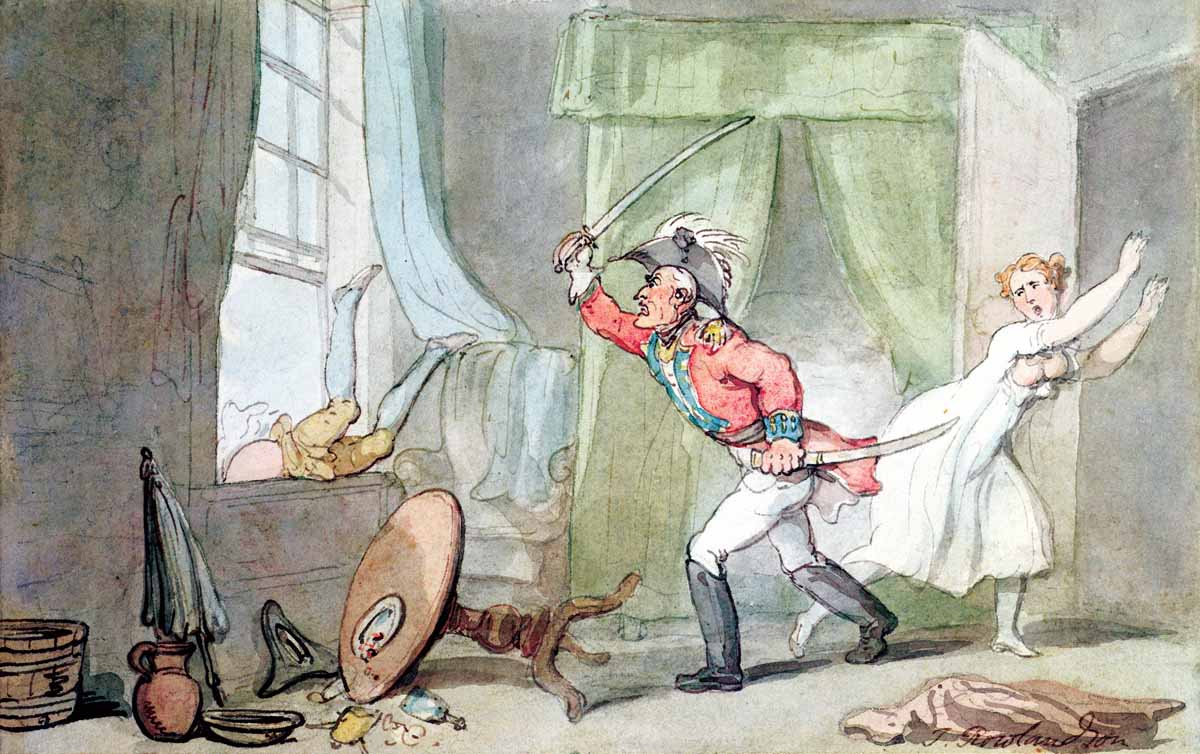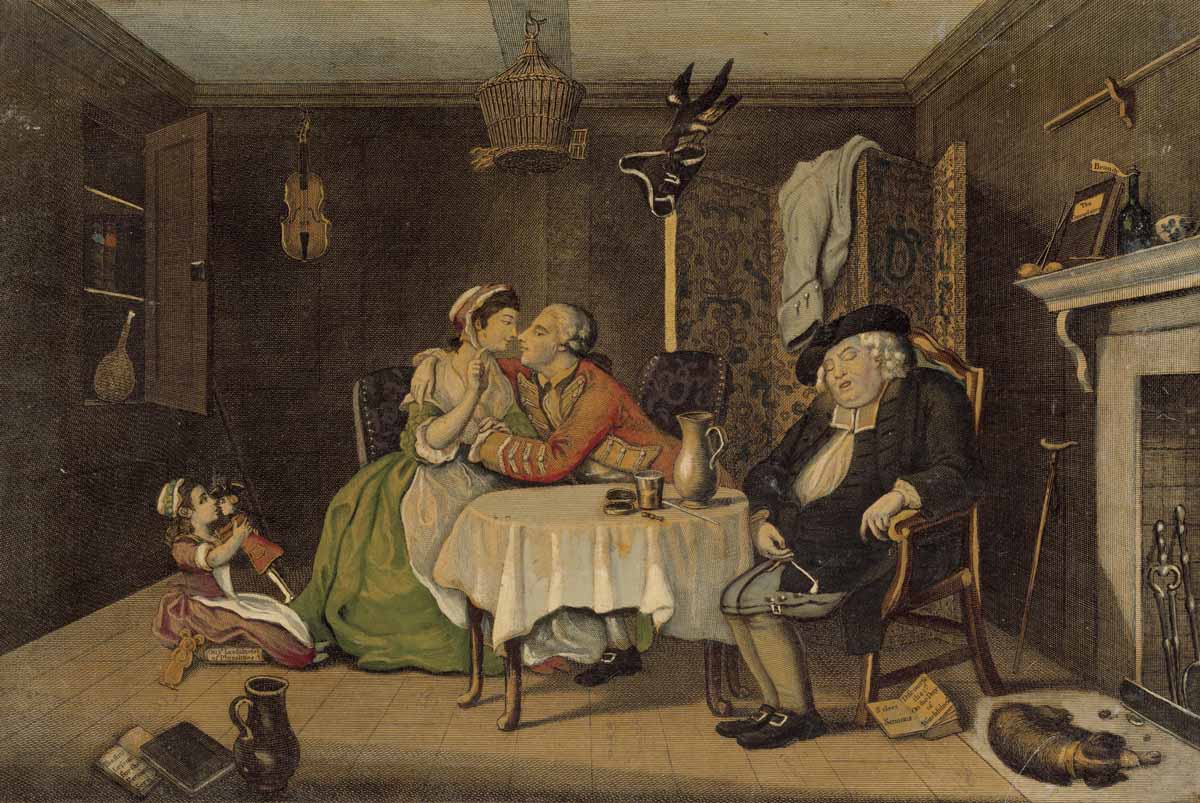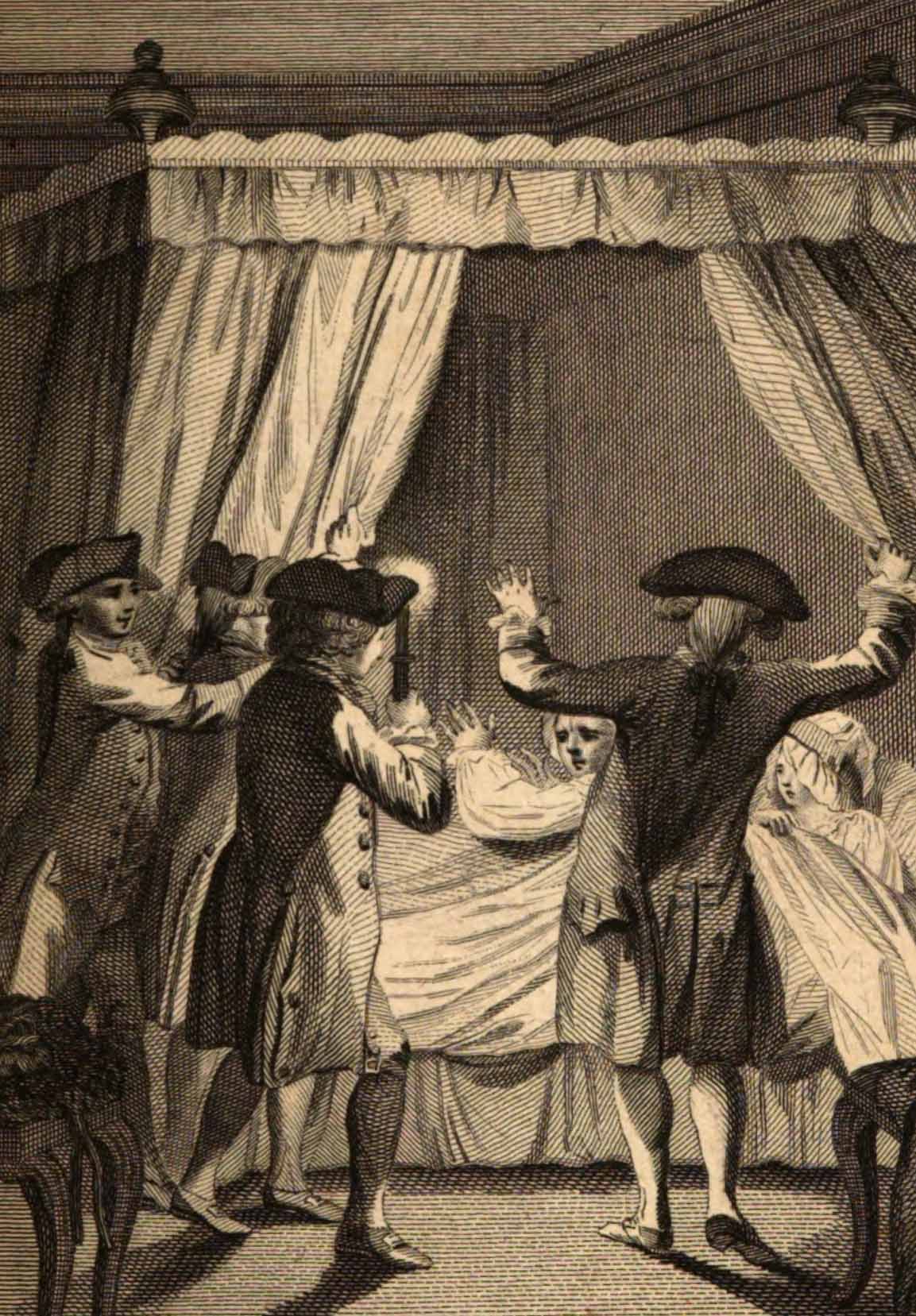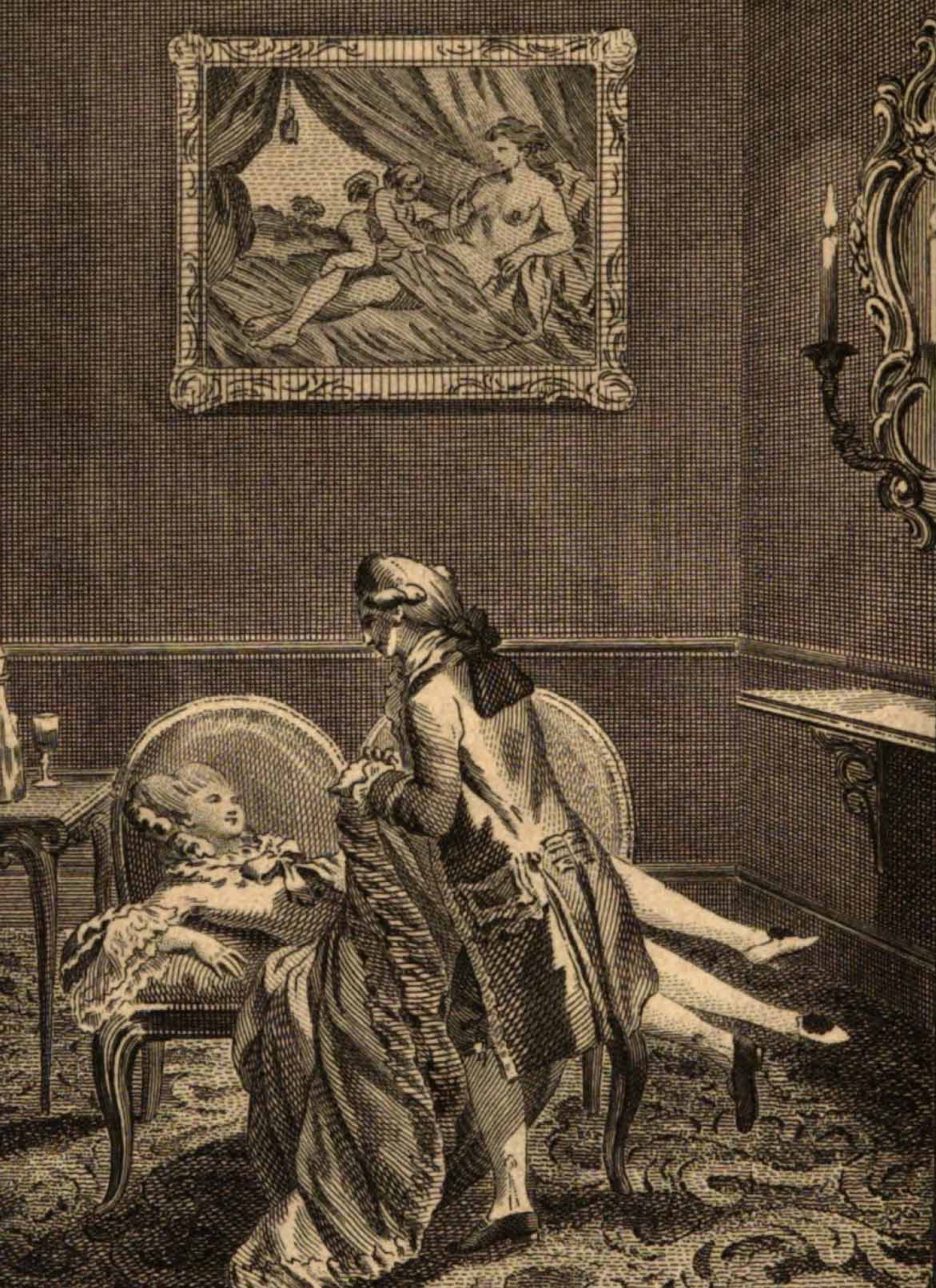In Praise of Older Women
Early modern historians, obsessed by widows and spinsters, have neglected the sexuality of other middle-aged women.

Sex is not just the preserve of the young. Large-scale studies of 18th-century sexuality have not, however, been attuned to this fact and have positioned young people at the centre of historical narratives which claim to speak for ‘society’ at large. This lack of historiographical engagement is particularly noticeable when examining women’s sexuality, which was deeply affected by age. The milestones of menarche, childbirth and the menopause marked a changing sexual body, while the value placed on women’s physical and aesthetic qualities powerfully coloured the meanings of ageing. Older women are not only neglected; an appreciation of how their sexuality changed throughout the life cycle is also rarely found. Though some historians of sexuality have begun to pay more attention to ‘old’ women – variously defined as being over 50, 55, or 60 – few have examined the treatment and experiences of what could be termed ‘middle-aged’ women, or investigated how their sexuality developed during a life cycle so often marked by marriage and motherhood. This ‘middle-age’ was a crucially important period, in which women experienced key sexual, physical and social changes.
New phase of life
Middle-aged women of the 18th century can be defined as those between and including the ages of 30 and 50. Just as there was no ‘universal threshold of old age’, so, too, there was no universal threshold for middle age. The term was rarely used in this period, but the absence of universal or particular vocabularies does not preclude historians from exploring these subjects, or from suggesting general numerical boundaries. For women, 30 heralded a new phase of life. Most women would have been married by this age: as the historians E.A. Wrigley and Roger Schofield have shown, the mean age of first marriage for women in 1700-49 was 26.2 years, falling to 24.9 years in 1750-99. Further, although 24.9 per cent of people never married in 1701, this fell to 10.7 per cent in 1751 and 6.8 per cent in 1801. Thus, the majority of women over 30 were wives in the 18th century and increasingly so. Many were also mothers: with limited contraception, women often began childbearing early in their marriages, with Wrigley and Schofield putting the mean age of maternity at 32. Thirty was arguably, then, the lower threshold for women’s progress into a ‘middle-age’ shaped, most often, by marriage and motherhood. Alternately, by 50, most women had passed out of this middle-age period, and were more clearly seen as ‘old’. Most were thought to have gone through the menopause and their physical and sexual capacities were emphatically seen as on the decline.

Given that marriage and motherhood were crucial to most women’s experiences of middle age, it is surprising that most examinations of middle-aged women’s sexuality have centred on depictions of spinsters and widows. This skewed focus does much to explain the preponderance of negative depictions of female ageing and the argument that middle-aged women were erotically defunct, even repulsive. However, maternity and motherhood could actually make middle-aged women extremely erotic and present them with new sexual roles, as is suggested by some examples from ‘criminal conversation’ trial reports, printed reports of 18th-century adultery trials. Many were excerpted in popular newspapers and circulated widely, catering to a market which demanded ‘erotic or obscene details’. Detailing extended sexual encounters divulged by peeping witnesses, they offer us a tantalising insight into how middle-aged women’s sexual behaviour was popularly represented. Overall, they suggest that wives’ and mothers’ ‘rightful’ inaccessibility could generate powerful voyeuristic fantasies.
Kindling emotions
In these trial reports, middle-aged wives and mothers often paid a central role. In the seven volumes of Trials for Adultery (1779-80), for example, over 40 per cent of the reports featured an adulterous wife aged 30 or above, or a marriage which was over ten years old (and in which the wife was likely to have been over 30). Wives ‘over thirty’ did not, however, constitute one homogeneous group, and younger and older middle-aged wives were often depicted differently. Though more was made of their motherhood, wives in their early and mid-thirties shared many erotic similarities with young wives. These women could have appeal as virtuous innocents who conformed to the female lifecycle. As Hugh Smith wrote in 1767: ‘Though a beautiful virgin must ever kindle emotions in a man of sensibility, a chaste, and tender wife, with a little one at her breast, is certainly, to her husband, the most exquisitely enchanting object on earth’. In trial reports, their ‘enchanting’ quality relied upon the transgression of this chastity and innocence, and the collapse of wives’ sexual inaccessibility through voyeuristic revelation. Take The Trial at Large of Robert Gordon (1794), a ‘case of seduction’ detailing Gordon’s destruction of a marriage of the most ‘perfect harmony’. His victim, Mrs Biscoe, is a 32-year-old woman ‘of the most fascinating charms’, who is presented as a ‘possession’ of great ‘value’ to be won or lost by husband or lover, eventually ‘led … off in triumph’ by her paramour. Like many seducer prototypes of late 18th-century fiction, Gordon is spurred on by his desire to ‘carry her off’ from her husband and family, her virtuous resistance and motherly guilt emphasising his successful transgression of her inaccessibility. Notably, Mrs Biscoe is the subject of various erotic scenes, all cut tantalisingly short. In one, the housekeeper, peering ‘through the shutters’ of the drawing room, sees Gordon drug Mrs Biscoe with laudanum and bolt the door before returning to ‘embrace’ her. At this point, conveniently, the housekeeper ‘withdrew from where [she] was listening’ and the reader is left to imagine the rest. In this way, Mrs Biscoe is presented to readers as a compelling erotic being and even as a subject for their own sexual imaginings.

In these works, other men’s wives, who should be unreachable, are enjoyed not only by their lovers, but by the reader himself. There was something tantalising, and deliciously deviant, about having sex with married women, whatever their age. In Kitty’s Attalantis (1766) – a prostitute ‘inventory’ – the mature but ‘blooming Char. R-’ is said to feign seizures ‘especially if any gentleman’s present; for then she certainly moves him with the story of her poor husband, which makes the gentleman more eager to start [having sex], thinking her really married’. Thus, she is ‘never out of fashion’, indicating that wifehood could heighten women’s erotic appeal. Similarly, ‘Mrs Wilk-’ is attractive because she ‘behaves herself in the modestest manner that any citizens wife is capable of’, attending church, walking in the park and going shopping. It is her ability to perform the role of the dutiful and modest wife that makes her ‘worth following’, just as Mrs Biscoe’s actual wifehood made her worth seducing.
Motherhood and wifehood
In these cases, motherhood often intersected with wifehood, heightening the sense of transgression and violated inaccessibility. Interestingly, in some trials, adultery occurs within contexts of new motherhood, adding to the sense of scandal. In one 1777 trial, Mrs Degen, aged 32, commits adultery with her lover while tending to her new-born. Her lover ‘lay with her every night naked and alone in one and the same bed’ while she ‘had the care of the child in a light closet adjoining to the … bedchamber’ and when ‘the child wanted to suck’ she would tend to it while lying in bed with her lover. Her paramour continues to find Degen erotically appealing when she performs acts of new motherhood: they had ‘the carnal use and knowledge of each other’s bodies’ repeatedly over this period. In her trial, Elizabeth Lockwood – also 32 – has sex with her lover during lying-in. Her paramour ‘used constantly, for the first ten days, to come and lay down, for some time, on the bed, night and morning, after Mrs Lockwood was delivered’. While the maid was helping Lockwood tend to her baby, her lover ‘came into the bed-chamber’ and Mrs Lockwood ‘bid him come into bed’; ‘more than once’ they had intercourse. The performance of sex during the lying-in period further scandalises their behaviour: not only were there taboos surrounding sex during lying-in, but the exclusivity of the post-natal space – from which even husbands could be debarred – is corrupted, even used to conceal their misconduct.
While inaccessibility heightened the sexual appeal of all wives and mothers, wives in their later middle-age often possessed other types of erotic charm. Unlike wives in their early thirties, they were more often presented as dominant and sexually forward, even appearing in inverted seduction narratives, cast as erotically and socially powerful sexual aggressors. In these cases, the men were often significantly younger than their lovers, as in the case of one trial involving Lady Westmeath, aged 37 at the time of the affair, who is depicted as her lover’s wily, worldly seductress. She is ‘an experienced matron – twelve years married – the mother of several children – and well practised in all the misteries, modes and dissipations of the gay world’, while her lover is not an ‘experienced rake, versed in the arts of seduction by the vicious practice of years, but the younger brother of a respectable family, not many years emerged from the controul of his tutor – and of an age young enough almost for the Lady to have been his mother!’ Notably, the older Westmeath is not only a mother, but almost old enough to be her paramour’s mother; this adds a different dynamic to their erotic relationship.
Indeed, Westmeath is presented as an enticing and erotically powerful figure, whose worldliness – she is a lady who ‘swagg[ers] in a curricle through the streets of London’ with different gallants – appeals to her young lover. Thus, as late as 1796, older women could be presented as sexual aggressors, questioning the rival notion that women’s delicacy, defensiveness and sexual passivity were firmly entrenched by the end of the century. Social status could also be enticing. In the trial of William Sneyd, the young man is said to have fallen ‘into the snare’ of the middle-aged Mrs Cecil, an older woman who ‘might be considered a matron’. He was attracted not to her ‘personal beauty’, but to the ‘rank and dignity which she held in the country, as wife of Mr Cecil’, her appeal being intimately related to her wifely position and social status.
Carnal knowledge
Reports involving older wives did not always, however, rely on inverted seduction narratives. In some, physical attraction was emphasised. In her trial, Anastasia Daly, aged 48, is presented as a deeply erotic figure, whom the young Earl of Kerry finds extremely enticing. The report explores Kerry’s initial attraction to Daly – he ‘paid her great attention’ and ‘was observed to be always near her at public places’– and their later, semi-pornographic sexual encounters. In one scene, we are invited to observe the unfolding sexual drama: the Earl of Kerry ‘set Mrs. Daly down in a chair’ and then ‘bolted the door, and returned again to Mrs Daly, and for some time kissed and toyed with her, and [he] then laid her down on the chairs, took up her petticoats, and had the carnal use and knowledge of her body’. This scene is illustrated with a print, in which we see Daly sprawled across two chairs, her slender legs revealed. Notably, rather than coyly glancing away, Daly directly, confidently, looks up at her lover.

Daly is presented, textually and visually, as the prime erotic object, who is ‘toyed with’, positioned and exposed by Kerry. Kerry’s attraction to Daly was more than erotic and the pair married after her divorce. Kerry wrote on Daly’s tombstone that she rendered him ‘the happiest of mankind’ during ‘31 years’ of marriage, and that God had taken from him ‘the dearest, the most beloved, the most charming, and the most faithful and affectionate companion that ever blessed man’ who possessed ‘the sweetest and most angelic meekness and simplicity, and of every virtue that can adorn the human mind’. Clearly, his deep, genuine attraction to Daly lasted well beyond her middle-age.
Thus, wifehood and motherhood could render middle-aged women apt subjects for erotic exploration. For women in their early and mid-thirties, wifehood and motherhood could give them appeal as virtuous, domestic creatures, whose supposed monogamy and motherly goodness gave them an enticing exclusivity. For women in their late thirties and forties, wifehood and motherhood could give them the social prestige and sexual experience which seemed especially attractive to young men. Such women featured heavily in trial reports, which staged enticing sexual dramas in supposedly ‘desexualised’ domestic spaces. When middle-aged women have received historiographical attention, the exaggerated focus on widows and spinsters has skewed our perception of how their sexuality was depicted. Older women were not ‘invisible’ or ‘monstrous’; they were extremely erotic figures:
Not like the Green-sick Girls, half-Mopen,
But, much more frank, and free, and open;
With more Entracements can improve
Each Pleasure, longer vers’d in Love;
Relish, with more experience’d Joys,
The fleeting Pleasure Youth destroys.
Ella Sbaraini studied History at the University of Cambridge. This article is an extract from her dissertation, ‘Rethinking middle-aged women’s sexuality in England, 1700-1815’, which was awarded the History Today–Royal Historical Society Undergraduate Dissertation Prize 2019.